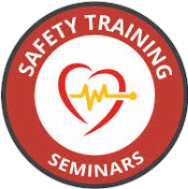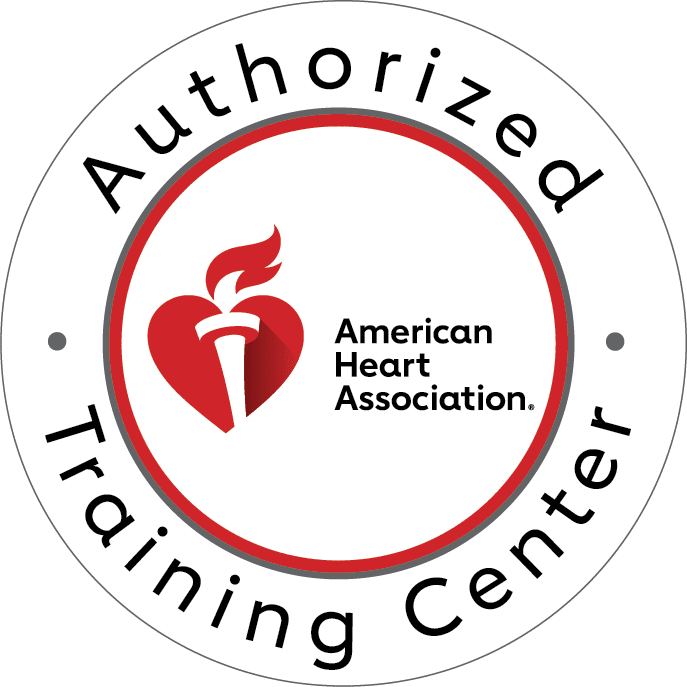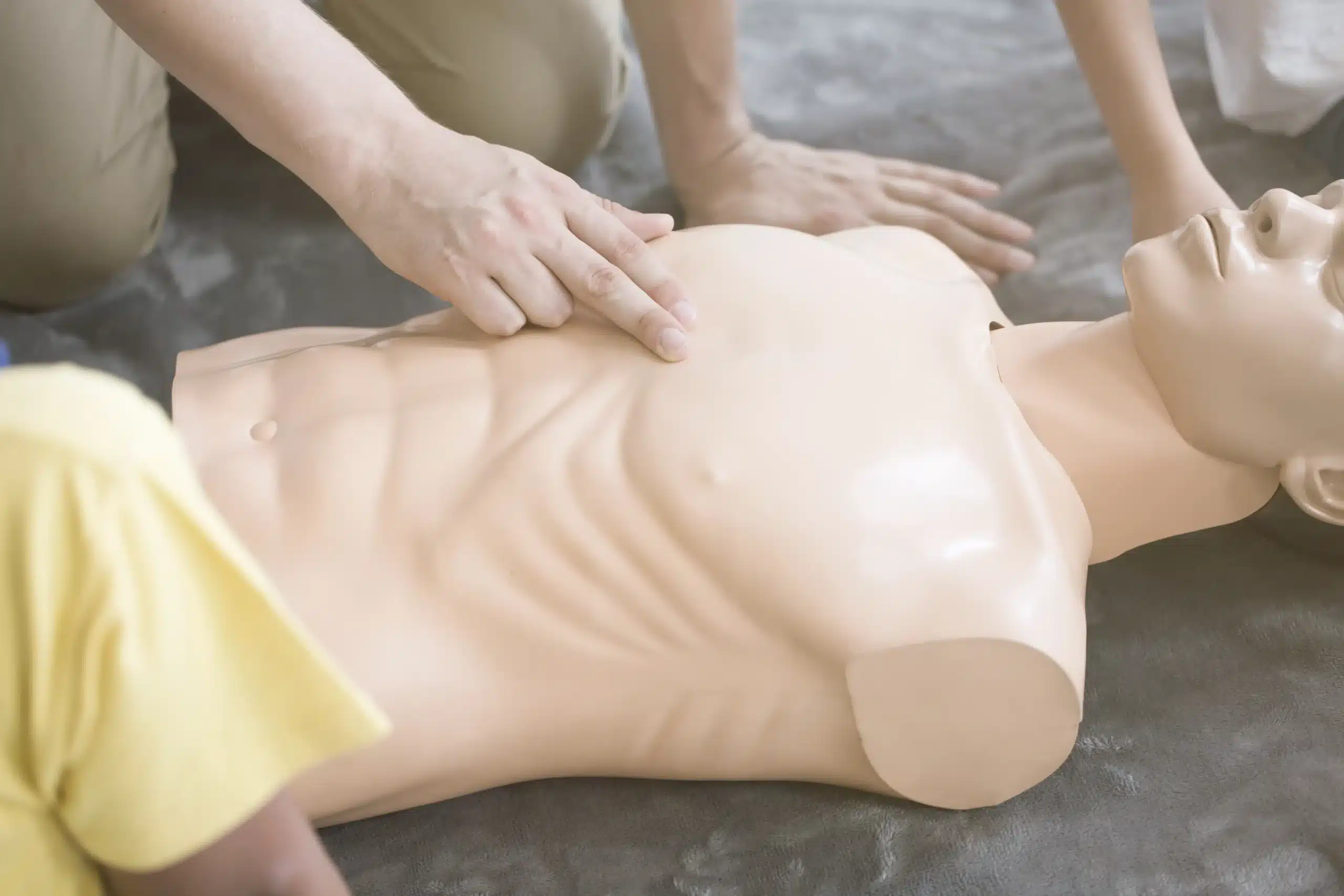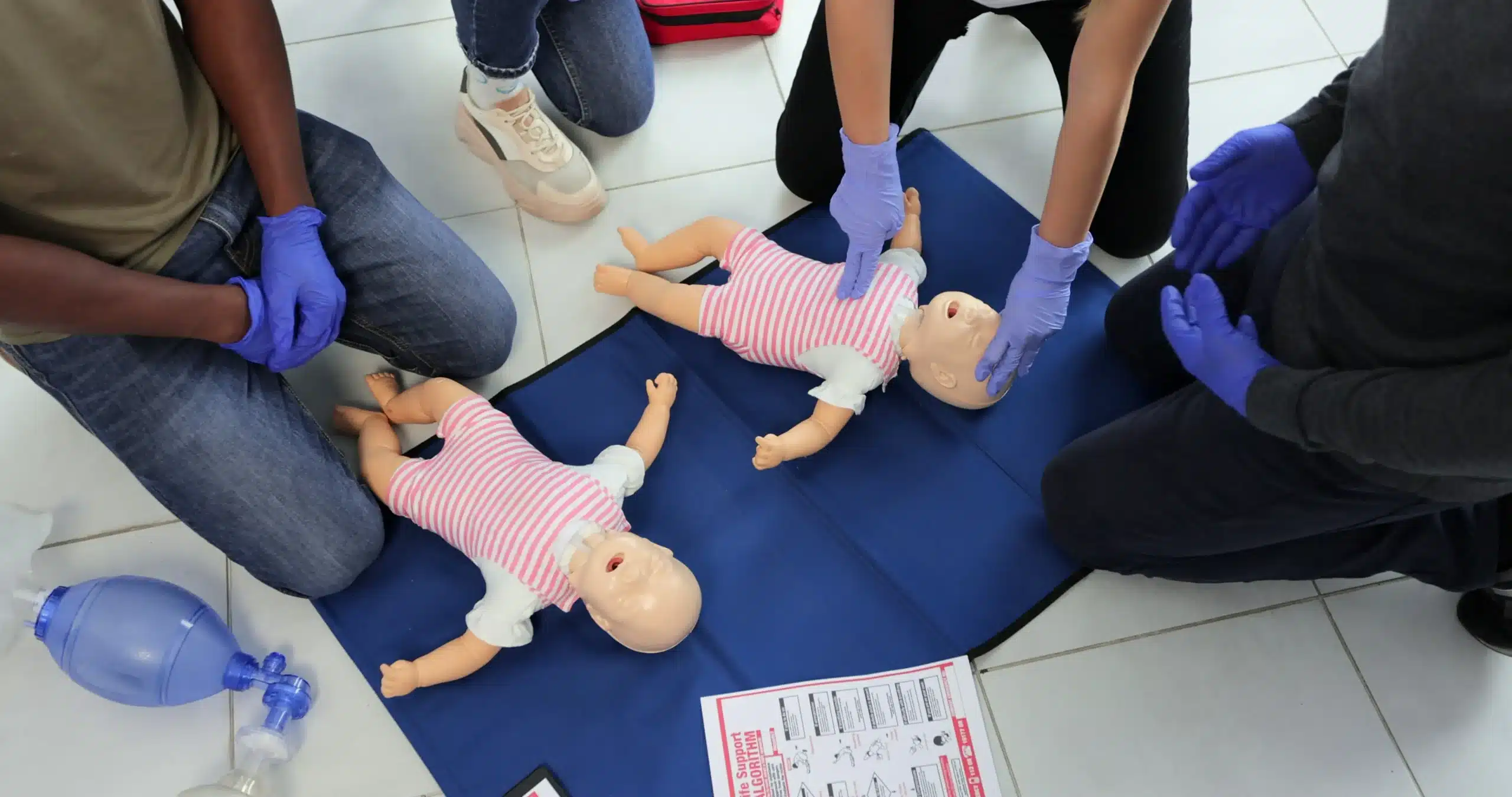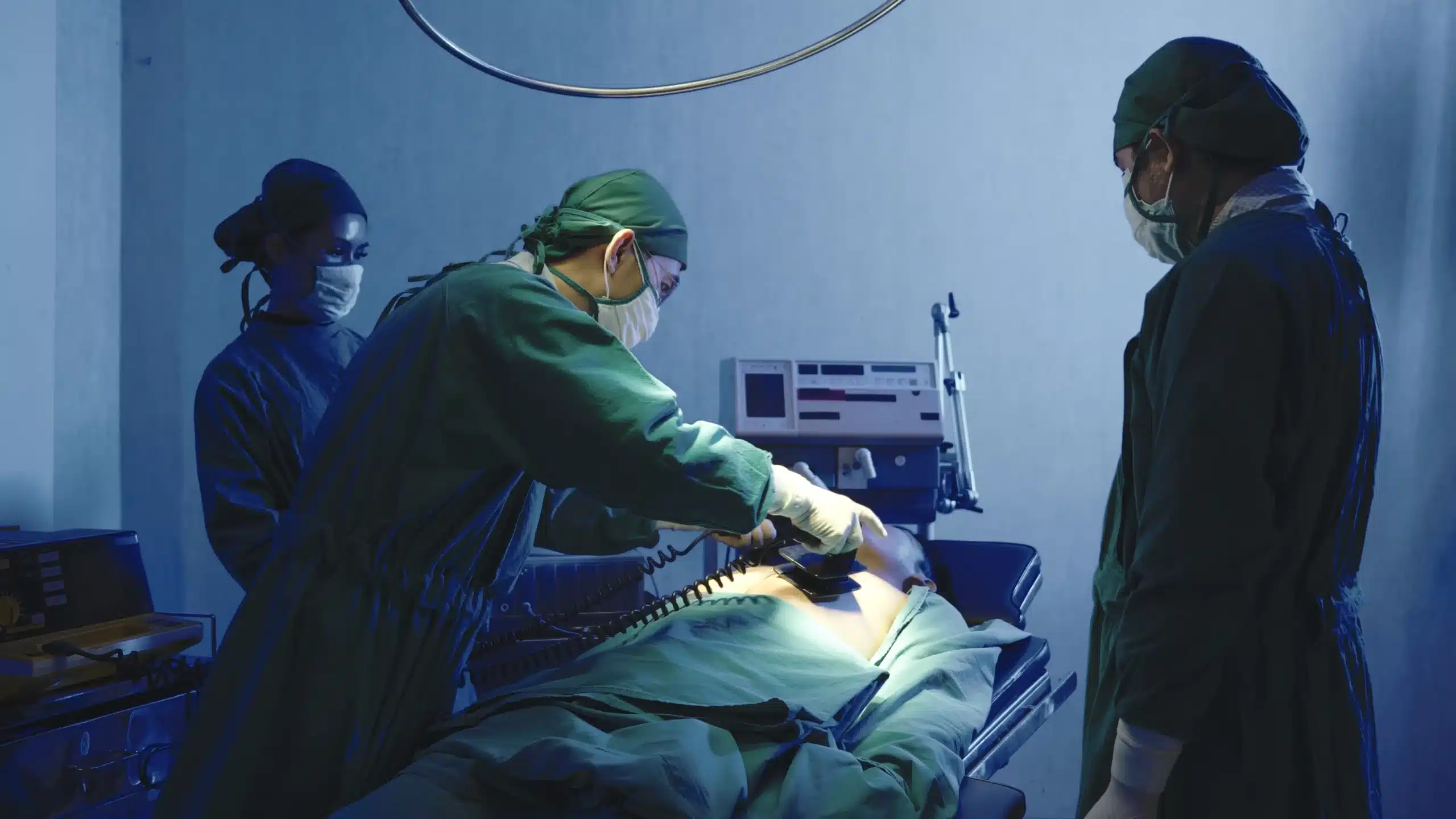Empower yourself with the life-saving skills of CPR. This guide explores the world of CPR training in Oakland, offering valuable insights into the different courses, certifications, and providers available. We’ll discuss the importance of CPR training for various professions, from healthcare workers to educators and fitness instructors, as well as the benefits of CPR knowledge for the general public. Discover how CPR training in Oakland can prepare you to respond confidently during emergencies and potentially make a life-saving difference. We’ll also cover the costs associated with CPR training, different learning formats, and tips for choosing the right course for your individual needs.
Key Takeaways
- CPR skills save lives: Learning CPR, whether for personal or professional reasons, equips you to handle medical emergencies and potentially save a life. Explore different learning formats to find what suits you best.
- Select a reputable training provider: Accreditation, instructor experience, and course content are key factors when choosing a CPR course. Consider your individual needs and ask providers questions to ensure the course aligns with your goals.
- Keep your CPR knowledge current: Regular practice and recertification are vital for maintaining effective CPR skills. Utilize online resources and stay updated on the latest guidelines to ensure you’re prepared for any emergency.
What is CPR Training?
CPR (Cardiopulmonary Resuscitation) training teaches you how to respond to medical emergencies where someone’s breathing or heartbeat has stopped. This can happen due to a heart attack, drowning, or other life-threatening situations. Learning CPR means understanding how to assess the situation, perform chest compressions, and provide rescue breaths. It also often includes training on how to use an AED (Automated External Defibrillator). These skills empower you to take potentially life-saving action before professional medical help arrives. Organizations like the American Red Cross offer CPR classes and certification.
Why CPR Skills Matter
CPR and First-aid training are vital because they prepare you to handle medical emergencies. These skills can make a difference in life-or-death situations. Knowing CPR allows you to provide immediate assistance to someone whose heart has stopped, increasing their chances of survival until paramedics arrive. Providers like Bay Area CPR emphasize the importance of widespread CPR training, as bystanders are often the first on the scene. The more people trained, the better equipped our communities are to respond to these critical events.
Debunking CPR Myths
One common misconception is that only medical professionals can perform CPR. This isn’t true. Anyone can learn CPR, and in emergencies, bystander intervention is crucial. Another myth is that CPR alone restarts a stopped heart. While CPR maintains blood flow and oxygen to the brain, it’s often the combination of CPR and defibrillation with an AED that restores a normal heart rhythm. Understanding this and other CPR facts encourages prompt and appropriate action in emergencies.
Top Oakland CPR Training Providers
Finding the right CPR training provider is crucial for receiving high-quality instruction and obtaining a recognized certification. Here’s a look at some of the leading CPR training providers in Oakland:
Safety Training Seminars
Safety Training Seminars, an official American Heart Association (AHA) Training Center in Alameda County, recently opened a new CPR training location in Oakland. They offer a wide selection of courses, including CPR, BLS, ACLS, and PALS, catering to various skill levels and professional requirements. This expansion into Oakland increases access to their well-regarded training programs for medical professionals and the community. Learn more about their courses and schedules on their website.
American Red Cross
The American Red Cross is a well-known provider of CPR classes and certification in Oakland. With a focus on clear instruction, their courses are suitable for people with all levels of experience. They offer both in-person classes and blended learning options, combining online modules with hands-on practice.
CPR Certification Oakland
CPR Certification Oakland specializes in AHA-certified CPR and First Aid training. They have a strong track record, having trained a large number of students. They offer classes in Oakland and other Bay Area locations, including convenient on-site training options for groups.
Oakland Fire Department
While the Oakland Fire Department may not directly offer regular CPR classes to the public, checking their website or contacting them about potential community training is worthwhile. Fire departments often partner with organizations like the Red Cross to offer CPR and first aid training to residents. The Red Cross website can be a helpful resource for finding these programs. They offer training for individuals, first responders, organizations, and specialized programs for schools.
CPR Training Services: What’s Offered?
This section covers the various CPR training services available, from basic to advanced levels. Understanding these different levels will help you choose the right course for your needs.
Basic Life Support (BLS)
BLS certification courses are the foundation of CPR training. These courses teach the essential skills to respond to life-threatening emergencies, including CPR for adults, children, and infants, along with how to use an automated external defibrillator (AED) and relieve choking. BLS certification is often a prerequisite for other advanced certifications and is vital for healthcare providers, first responders, and anyone who wants to be prepared for emergencies. Safety Training Seminars offers BLS courses in Alameda, CA, through the American Heart Association.
Advanced Cardiac Life Support (ACLS)
ACLS training builds upon the foundational skills learned in BLS. It’s designed for healthcare professionals who manage cardiac arrest and other cardiovascular emergencies. ACLS courses cover topics like airway management, intravenous access, and pharmacology related to cardiac emergencies. This advanced training is essential for doctors, nurses, paramedics, and other healthcare providers working in critical care settings. Safety Training Seminars offers these courses through the American Heart Association.
Pediatric Advanced Life Support (PALS)
PALS certification focuses on the specialized skills needed to respond to emergencies involving infants and children. These courses cover pediatric assessment, resuscitation, and stabilization techniques. PALS training is crucial for pediatricians, pediatric nurses, emergency medical technicians, and other healthcare providers who regularly work with children. Safety Training Seminars offers PALS courses through the American Heart Association.
First Aid and AED Training
First aid training equips you with the skills to manage various medical emergencies, from minor injuries like cuts and burns to more serious situations like fractures and allergic reactions. Learning how to use an AED is a critical component of first aid training, as it can significantly increase the chances of survival for someone experiencing sudden cardiac arrest. You can find CPR and First-aid certification courses in Alameda, CA, that combine these essential skills, also offered by Safety Training Seminars.
CPR Training Costs & Value
Knowing the cost of CPR training is important, but understanding its real value is key. This section breaks down typical expenses, highlights potential savings, and emphasizes why this life-saving skill is a worthwhile investment.
Typical Course Costs
CPR training costs in Oakland vary depending on the provider and the type of certification. Generally, you can expect to pay between $60 and $90 for a basic CPR course. For example, CPR Certification Oakland offers an American Heart Association (AHA) certified CPR class for $64.95. Adding First Aid training often increases the cost, with combined CPR and First Aid courses typically priced around $85. These classes usually run for about three hours. The American Red Cross also provides CPR classes and certification in Oakland, with certifications valid for two years.
Group Discounts & Promotions
If you’re training a team or group, look for providers offering group discounts. Safety Training Seminars, for instance, offers group rates for various courses, including BLS, ACLS, PALS, CPR, and First Aid certification. These discounts can significantly lower the per-person cost, making training more affordable for organizations. Check with individual providers for their specific group discount policies. You might also find seasonal promotions or discounts for certain professions, so it’s always worth asking.
Low Price Guarantees
Some training centers, like CPR Certification Oakland, offer low-price guarantees. This means they commit to providing competitive pricing while maintaining high-quality, industry-standard training. A low-price guarantee can give you confidence that you’re receiving excellent instruction without overspending. Remember to compare not just the price but also the course content, instructor qualifications, and the overall reputation of the provider when making your decision. Investing in CPR training is investing in the safety and well-being of your community, and finding the right balance of cost and quality is essential.
CPR Training Formats & Benefits
CPR training comes in a few different formats, each with its own advantages. Understanding these differences can help you choose the best fit for your schedule, learning style, and certification needs.
In-Person Classes
In-person CPR classes offer hands-on learning and direct interaction with a certified instructor. This format provides immediate feedback, which is essential for developing proper technique and confidence in your skills. For those who thrive in a structured, interactive environment, in-person training offers a valuable opportunity to ask questions and practice skills in real-time. Safety Training Seminars offers a range of in-person CPR courses in Alameda, CA.
Online Courses
Online CPR courses offer flexibility and convenience, allowing you to learn at your own pace and on your own schedule. This format can be a good option for those who prefer self-directed learning or have busy schedules. However, it’s important to be aware that online CPR certifications may not meet all requirements for certain professions, especially those in healthcare. Always check with your employer or licensing board to ensure an online course fulfills their specific requirements. You can learn more about online CPR certification options from resources like Healthline First Aid.
Blended Learning
Blended learning combines the best of both worlds, offering the flexibility of online coursework with the hands-on practice of an in-person skills session. You can work through the online modules at your convenience and then attend a shorter in-person session to demonstrate your skills and receive personalized feedback from an instructor. This format is often a good choice for those who want a more comprehensive learning experience but need more flexibility than a traditional in-person class. The Red Cross offers blended learning courses in nearby Oakland.
Choose the Right Format
Selecting the right CPR training format depends on several factors, including your learning style, schedule, and certification requirements. If you learn best through hands-on practice and interaction, an in-person class might be the best fit. If you need more flexibility, consider an online or blended learning course. Before enrolling, confirm that the course meets any workplace or regulatory requirements and provides the necessary hands-on training components. Safety Training Seminars offers a variety of CPR training formats to meet your individual needs.
CPR Certification & Employer Recognition
Getting CPR certified shows you’re ready to help in a crisis and can boost your professional qualifications. Understanding available certifications, their validity, and why employers value them is key.
Available Certifications
Safety Training Seminars offers American Heart Association (AHA) certified CPR and First Aid classes. The AHA is a leader in CPR training, and their certification is widely accepted. This makes it valuable whether you’re aiming for a healthcare career, working in education, or simply want to be prepared. AHA certification assures employers you’ve received high-quality training based on the latest science.
Certification Validity & Renewal
AHA CPR certifications are generally good for two years. To keep your skills sharp and stay current on CPR techniques, renew your certification before it lapses. Safety Training Seminars offers renewal courses covering the same material as initial certification, making the process straightforward.
Industry Standards
The AHA sets the bar for CPR and First Aid training with evidence-based guidelines and top-notch materials. Employers often look for candidates with AHA certifications because of the program’s reputation. Choosing an AHA-certified training center like Safety Training Seminars ensures you receive excellent instruction that meets these industry standards. This prepares you to handle emergencies and strengthens your resume, showing your dedication to professional growth.
Who Needs CPR Training?
CPR training equips you with life-saving skills valuable in various personal and professional settings. While some professions require it, anyone can benefit from knowing how to respond to a medical emergency. Let’s explore who can particularly benefit from CPR certification.
Healthcare Professionals
For healthcare providers like doctors, nurses, and EMTs, CPR certification is often a job requirement. Regularly refreshing these skills is crucial for maintaining proficiency in emergency response. Safety Training Seminars offers the American Heart Association RQI (Resuscitation Quality Improvement) program, a convenient way for healthcare professionals to renew their BLS, ACLS, and PALS certifications. RQI helps Oakland healthcare providers maintain their skills and knowledge through regular practice, ensuring they’re always prepared to deliver high-quality care during critical moments.
Childcare Providers & Educators
Working with children carries a responsibility to ensure their safety. For childcare providers, teachers, and camp counselors, CPR and First Aid training are invaluable. Knowing how to respond to emergencies like choking, allergic reactions, or sudden cardiac arrest can make all the difference. Organizations like the Red Cross offer programs specifically designed for schools and childcare settings, providing First Aid training for educators and administrators. They even offer resources on training students.
Fitness Instructors & Coaches
Fitness professionals often guide individuals through strenuous activities, increasing the risk of medical incidents. CPR and First Aid training are essential for personal trainers, coaches, and anyone working in the fitness industry. These skills enable them to respond effectively to emergencies, ensuring the safety of their clients. Consider CPR and First-aid classes in Oakland, covering certifications like BLS, ACLS, PALS, and First Aid.
General Public & Parents
CPR training isn’t just for professionals. Parents, grandparents, and anyone in the general public can benefit from learning these life-saving techniques. Knowing CPR can empower you to respond confidently during emergencies, potentially saving the life of a loved one or a stranger. CPR classes in Oakland are designed for a wide audience, emphasizing the importance of CPR training for everyone. Equipping yourself with these skills can make a profound difference in a critical situation.
Choose the Right CPR Training
Finding the right CPR training involves considering several factors to ensure it aligns with your specific needs and learning style. Let’s explore some key aspects to help you make an informed decision.
Factors to Consider
Think about what you want to achieve with your training. Are you seeking basic CPR knowledge for personal use, or do you need certification for a specific job? If your profession requires it, ensure the course meets all workplace requirements and regulations. For example, healthcare providers often need certifications aligned with American Heart Association (AHA) guidelines. Consider the class format, too. Do you prefer in-person, hands-on instruction, or would the flexibility of an online course be a better fit? Location and scheduling are also important. Choose a training center that’s convenient and offers classes that work with your schedule. Finally, check if the training covers both CPR and First Aid, as having both certifications is often advantageous. CPR Certification Oakland offers combined courses that teach these essential, lifesaving skills.
Questions for Providers
Before committing to a specific CPR training course, prepare some clarifying questions for potential providers. Inquire about the type of certification offered—is it from the AHA or the American Red Cross? Both are reputable organizations, but your workplace might prefer one over the other. If you need the certification for your job, confirm the course meets OSHA requirements. Ask about the instructor’s experience and qualifications, as a knowledgeable and experienced instructor can greatly enhance your learning. Inquire about the class size, too. Smaller classes often allow for more personalized attention and feedback. Finally, ask about the renewal process for your certification, because maintaining your skills is critical.
Accreditation Matters
Choosing an accredited training center is essential for a high-quality learning experience and a recognized certification. Accreditation signifies that the training center meets specific standards and guidelines set by reputable organizations. For instance, Safety Training Seminars is a woman-owned AHA Training Center, demonstrating their commitment to delivering high-quality, AHA-compliant courses. Look for providers affiliated with organizations like the AHA or the American Red Cross. These organizations have rigorous standards for CPR training, ensuring you receive comprehensive and current instruction. If you’re a healthcare professional, the AHA’s RQI program offers an efficient path to BLS, ACLS, and PALS certifications. Selecting an accredited training center gives you confidence in the quality of your training and the validity of your certification.
Prepare for Your CPR Training
Getting ready for your CPR training doesn’t require a ton of prep, but knowing what to expect and how to set yourself up for success can make a big difference. Here’s a quick rundown to help you feel confident and prepared:
What to Expect
CPR training is designed to be straightforward and accessible, even for complete beginners. You’ll learn the core techniques of CPR in a supportive environment led by certified instructors. Expect a combination of demonstrations, hands-on practice, and clear explanations. A good CPR class covers not only the physical steps but also emphasizes the importance of quick action and staying calm in emergencies. Safety Training Seminars, for example, offers American Heart Association courses designed to equip you with the skills and confidence to respond effectively.
Required Materials
Most CPR training providers will give you the essential materials. This often includes access to online resources, manuals, and sometimes even printable quick guides for after the class. It’s always a good idea to double-check with your chosen provider—like Safety Training Seminars—to confirm exactly what they provide and if there’s anything you need to bring. Having the right materials can really help reinforce what you learn during the training. Check with your local chapter of the American Red Cross for details on required materials for their courses.
Tips for Success
Want to get the most out of your training? Consider a blended learning approach. This combines online learning with in-person practice, offering flexibility and the chance to really solidify your skills. Also, look for classes with smaller groups. Smaller classes often mean more personalized instruction and a better opportunity to ask questions and get direct feedback. CPR Certification Oakland is one provider that may offer smaller class sizes. This personalized attention can significantly improve your learning experience and boost your confidence in applying your new CPR skills.
Maintain Your CPR Skills
CPR is a lifesaving skill, but like any skill, it requires upkeep. Regular practice and staying informed about the latest guidelines are essential for providing effective CPR in an emergency. Let’s explore how you can maintain your CPR skills and be prepared to act confidently when needed.
Refresher Courses & Practice
CPR certifications are typically valid for two years. To keep your skills sharp and your certification current, sign up for recertification courses as your current certification nears its expiration date. Regular practice between these refresher courses is also crucial. Even a quick review of the steps and visualizing different scenarios can significantly improve your response time and effectiveness during a real emergency. Healthcare professionals can maintain their advanced life support skills through programs like the American Heart Association RQI (Resuscitation Quality Improvement) program, offered by Safety Training Seminars. This program provides a streamlined way to renew BLS, ACLS, and PALS certifications.
Online Resources
Many organizations offer valuable online resources, including refresher activities, printable instructions, and videos demonstrating proper CPR techniques. These resources are great for practicing at home and reinforcing what you’ve learned in a classroom setting.
Stay Updated on Guidelines
CPR techniques and best practices evolve with ongoing medical research. Staying informed about these updates is crucial for delivering the most effective care. Organizations like the Red Cross and the American Heart Association regularly review and update their guidelines. Check for updates periodically to ensure your training aligns with current recommendations. Staying informed shows your commitment to providing high-quality CPR and increases the chances of a positive outcome during an emergency.
Related Articles
- Why CPR is Essential for Saving Lives
- Debunking Common CPR Myths for Life-Saving Confidence
- CPR Certification in Alameda: Your Comprehensive Guide
- CPR Classes in Alameda: Your Complete Guide
- The Science Behind Effective CPR: A Comprehensive Guide
Frequently Asked Questions
What’s the difference between CPR and First Aid? CPR focuses specifically on restoring breathing and circulation when someone’s heart has stopped or they’re not breathing adequately. First Aid covers a broader range of medical emergencies, from minor injuries like cuts and burns to more serious situations like choking or allergic reactions. Often, CPR and First Aid training are combined into one course.
How long does CPR certification last, and how do I renew it? CPR certifications typically remain valid for two years. To renew, you’ll need to take a recertification course before your current certification expires. This refresher course covers the latest guidelines and techniques, ensuring your skills are up-to-date.
Which CPR certification is best? The American Heart Association (AHA) and the American Red Cross are two highly respected organizations offering CPR certification. Both provide excellent training based on current medical guidelines. The best choice for you depends on your specific needs and whether your workplace or licensing board has a preference.
What if I’m nervous about performing CPR in a real emergency? It’s completely normal to feel apprehensive about using CPR in a real-life situation. That’s why quality training emphasizes not just the technical skills but also building confidence and managing stress in emergencies. Regular practice and visualization can also help you feel more prepared and ready to act.
How can I find a CPR class near me? Several organizations offer CPR training, including the American Red Cross, local hospitals, community centers, and specialized training centers like Safety Training Seminars. Online searches and checking with your local fire department or health organizations are great ways to find CPR classes in your area.
